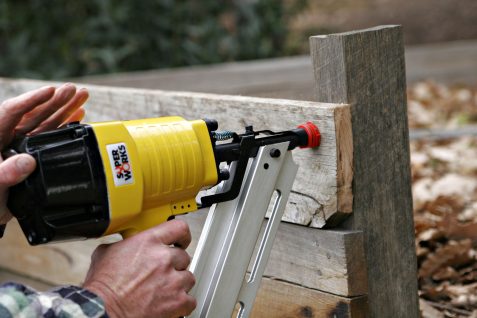Safety Talks – Pneumatic Tools

Pneumatic tools offer great versatility and the capability to get a job done quickly and efficiently. As with any energized equipment there is the potential for harm to people or property. With this Safety Talk we will discuss basic handling, use and storage techniques that will minimize potential hazards created by these tools.
Proper use of pneumatic tools:
- Read the manufacturer supplied manual before operating the tool.
- Wear appropriate PPE. A baseline of safety glasses/goggles, hearing protection and safety shoes is required. (Face protection, and abrasive gloves may also be needed)
- Never use compressed air for cleaning unless fitted with an attachment to reduce the pressure at the nozzle to 30 psi.
- Never point the nozzle at another person or yourself, rust particles can be discharged from the compressor at a high velocity causing injury
Attachments
- Always double check to ensure the attachment is securely connected to the hose.
- A positive locking device, chain or a short wire attaching the tool and hose is recommended for added protection.
- Attachments that shoot fasteners at pressures greater than 100 psi need to be equipped with a device that only ejects fasteners when the muzzle is pressed up against the work surface.
Hoses
- If using a hose greater than 1/2” diameter, a safety excess flow valve must be installed at the source of the air supply.
- Use hoses that have a minimum working pressure rating of 150% the maximum pressure produced by the compressor.
- Inspect hoses on a regular basis for bulges, cuts, cracks etc.
- Use hoses that are resistant to abrasion, crushing, and cutting.
- Blow any air out of the line before attaching a tool.
- When using hoses, minimize trip hazards and protect the physical condition of the hose to the best of your ability.
Air Compressors
- Do not adjust air pressure greater than the attachments rating
- Drain the tank after 4 hours of use to prevent water build up which could lead to rust.
- Allow engine to completely cool before refueling.
- Only use gas powered compressors in well ventilated areas. Electric compressors need to be plugged into a properly grounded plug (use GFCI when needed).
